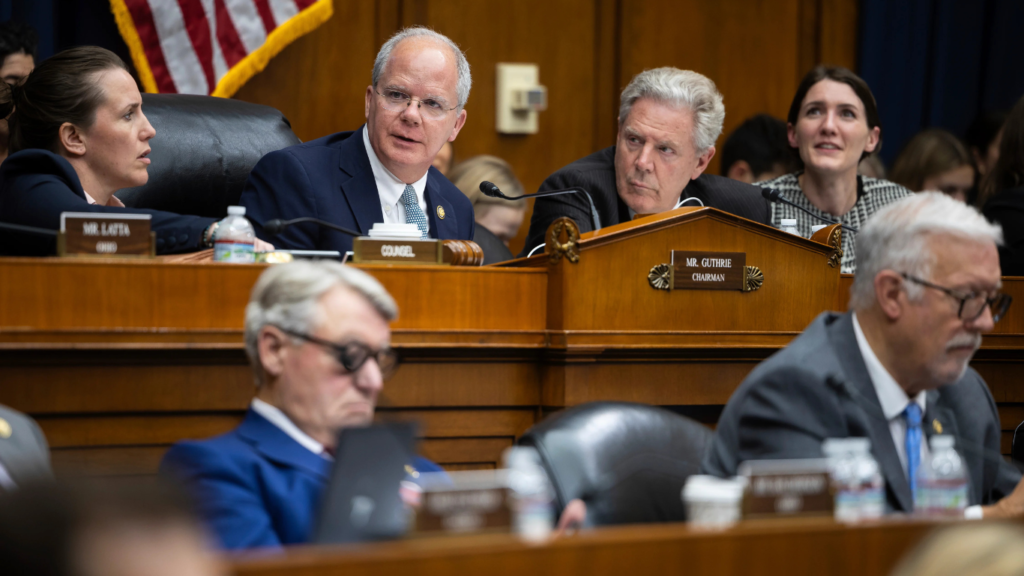The Viral Moment That Caught Everyone’s Attention
In a surprising turn of events, Representative Blake Moore found himself at the center of a nationwide conversation after video footage showed him apparently dozing off during a high-stakes reconciliation markup session. While political fatigue is nothing new, the digital storm that followed this moment has exposed how technology is transforming the standards of accountability in public service.
The image of Blake Moore with eyes closed during a live-streamed government meeting rapidly spread across news platforms and social media, fueling debate on whether lawmakers should be subject to tech-driven performance tracking.
Digital Surveillance and Government Transparency
Tech Tools Don’t Blink
Modern surveillance tools powered by AI and 24/7 news streams don’t sleep. Unlike people, these systems continuously analyze and distribute data in real-time. As seen with Blake Moore, even a brief lapse in attention becomes instant news in today’s digital-first landscape.
Legislative sessions that were once limited to paper transcripts and insider notes are now streamed online, automatically transcribed, and reviewed by the public and the media. This makes any deviation from expected conduct, like that of Blake Moore, instantly noticeable and viral.
AI and Real-Time Monitoring
With AI capable of monitoring facial expressions, blink frequency, and engagement levels, discussions are emerging around whether these tools should be deployed in political settings. If such systems were in place, Blake Moore’s moment of fatigue wouldn’t just have been noticed it would have been flagged and recorded.
While there’s no indication that such tools are currently used in government, the situation involving Blake Moore presents a possible future where lawmakers’ behavior is logged by machines rather than humans.
The Human Side of Political Fatigue

Exhaustion in a Demanding Role
Criticism aside, it’s essential to recognize that legislators, including Blake Moore, often work under intense schedules. Long hours, constant meetings, and policy pressure make fatigue inevitable. The issue isn’t whether lawmakers feel tired it’s how those moments are interpreted when caught on camera.
In this light, the situation involving Blake Moore may not be an indictment of individual behavior but a sign of systemic burnout. It also challenges us to rethink how we support those in high-stress public service roles.
Can Technology Alleviate Fatigue?
Rather than punishing fatigue, technology might offer solutions. Wearables that monitor alertness, stress levels, and sleep quality could help lawmakers like Blake Moore manage their health and performance better. These tools, already popular in corporate environments, could eventually find a place in politics.
Instead of framing technology as a watchdog, perhaps we should see it as a supportive companion to help officials operate at their best.
Tech Amplification of Political Incidents
The Algorithmic Snowball Effect
Once the video of Blake Moore surfaced, it was quickly picked up by AI-curated content aggregators and distributed across online platforms. These algorithms prioritize engagement and often boost content that sparks debate or controversy further fueling the public reaction.
This technological echo chamber transformed a moment of stillness into a nationwide discussion on political integrity, thanks to systems designed to elevate the most sensational content.
Judged by Machines
The case of Blake Moore exemplifies how public figures are increasingly judged not just by constituents or peers but by machines. Automated headlines, algorithmic framing, and predictive behavior tagging now shape the narrative before humans have a chance to process it.
This brings us to a vital ethical consideration: how should we handle automated political coverage that may misrepresent intent or exaggerate situations?
Balancing Accountability and Privacy
Public Duty vs. Private Space
There’s an ongoing debate about how much privacy a public official should retain while on duty. Since Blake Moore was in a public meeting, many argue that everything is fair game. But with AI analyzing body language and attention spans, the line between scrutiny and surveillance gets increasingly blurred.
Should we build boundaries to protect personal moments like a yawn or closed eyes? Or should we expect officials to be “always on” in a digital democracy?
Data Governance in Government
The incident with Blake Moore also sparks questions about who owns this kind of performance data. If AI were used to track focus or attention, would that data be stored by the government? Would it be publicly accessible? Could it be used in campaigns?
These are questions that need addressing before any serious implementation of AI oversight in government settings.
Using Technology for Constructive Change
Metrics for Engagement
Rather than focus solely on exposure, tech could help create useful dashboards that track metrics such as speaking time, bill sponsorship, voting record, and more. A system like this could paint a fuller picture of Blake Moore’s work, making a brief lapse in attentiveness a minor footnote in an otherwise productive career.
Such a data-driven approach could encourage more nuanced public discussions and foster informed voting decisions.
Transparent, Not Punitive Tech
Technology should not become a tool for shaming but a platform for transparency and improvement. For example, if Blake Moore or any representative receives alerts on declining focus levels, they could take proactive steps, whether that means rescheduling sessions or seeking support.
The goal should be to create healthier work environments, not harsher digital courts of opinion.
Public Perception in a Digital Democracy
Performance as Perceived Online
One of the most significant lessons from the Blake Moore episode is that performance today isn’t measured solely in actions but in how those actions are digitally perceived. Public figures now operate in an environment where a single image can outweigh years of consistent service.
This puts pressure on officials to manage not just their duties but their digital presence often in ways beyond their control.
Educating the Public on Tech Impact
While many were quick to criticize Blake Moore, fewer questioned how technology accelerated the backlash. Educating the public on how AI shapes media narratives is essential if we are to build a more thoughtful, discerning audience.
Without this awareness, every minor incident could spiral into a viral controversy, distorting both perception and policy focus.
What We Can Learn from the Blake Moore Moment
It’s About More Than One Person
Though the story centers on Blake Moore, it represents a larger issue. Lawmakers today are navigating a minefield of constant observation, real-time feedback, and AI-powered scrutiny. The incident could have involved anyone it just happened to be Blake Moore this time.
This highlights the need for updated frameworks on privacy, performance evaluation, and ethical media coverage.
The Tech-Public Service Relationship
The relationship between technology and politics must evolve. Rather than fearing AI and surveillance, public offices can harness them for better productivity, enhanced public communication, and fairer accountability systems.
If used wisely, these tools can support public servants like Blake Moore, ensuring they are both held to high standards and supported in meeting them.

Key Takeaways
- Representative Blake Moore’s viral moment during a markup session has triggered a nationwide discussion on political fatigue and AI-powered accountability.
- AI surveillance, livestreaming, and algorithmic distribution amplify even minor incidents in the public sphere.
- Rather than penalize public figures, technology should be used to support focus, transparency, and performance.
- The digital age calls for ethical standards in how political behavior is monitored and shared.
- Lawmakers like Blake Moore exemplify the challenges of serving in a high-tech democracy where every movement is monitored, recorded, and analyzed.














